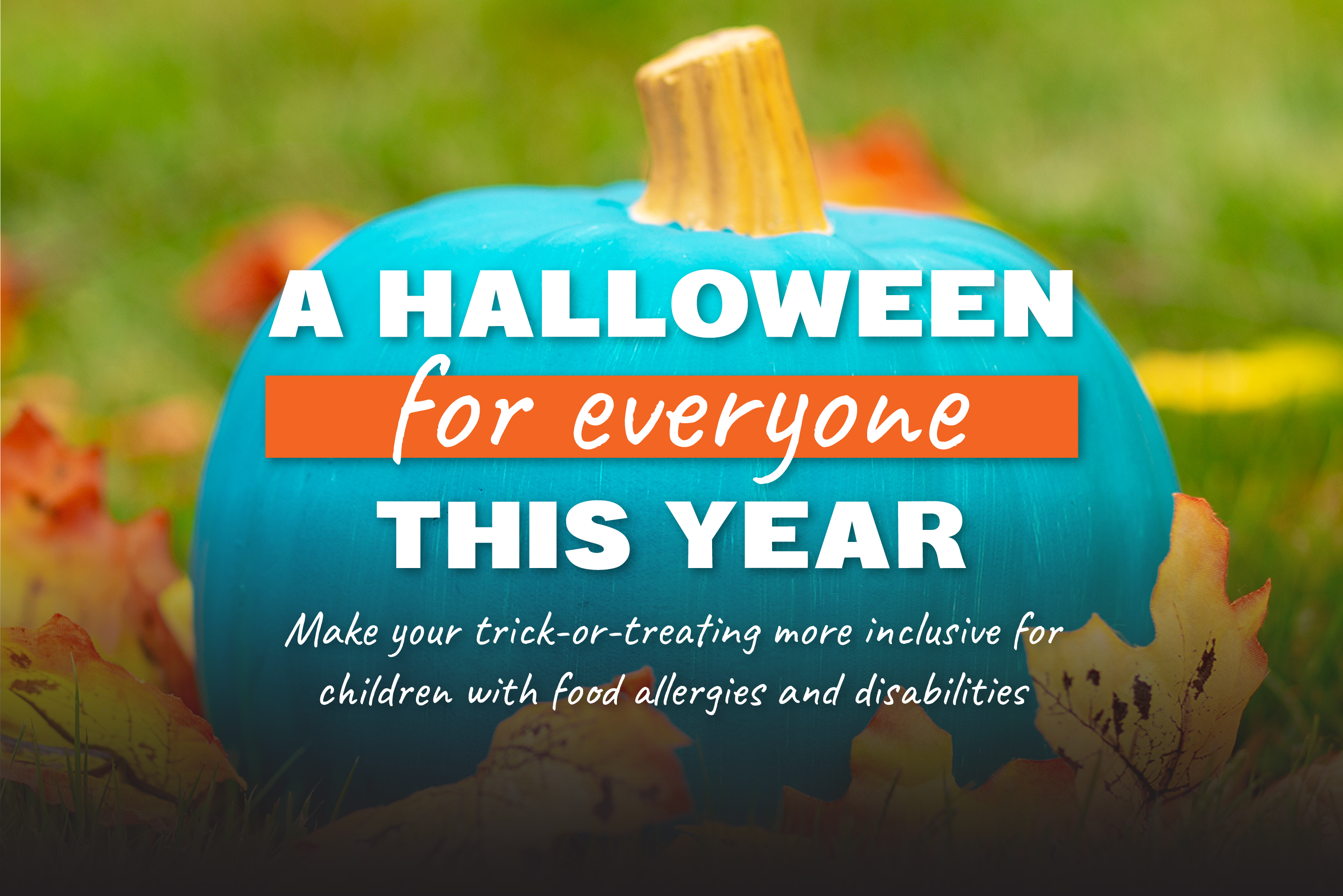While we prepare our costumes and homes for trick-or-treaters this Monday, now is a good opportunity to consider the trick-or-treaters who may have different needs than others. Below are some tips if you want to make your Halloween a little more inclusive for all trick-or-treaters!
Teal Pumpkin Project
The Teal Pumpkin Project makes trick-or-treating safer for the 1 in 13 children who live with food allergies. If you place a teal pumpkin on your doorstep, you are signaling that you offer non-food trinkets and treats that are safe for all trick-or-treaters. These include glow sticks, pencils, bubbles, erasers, bouncy balls, spider rings, vampire fangs, playing cards, bookmarks, stickers, and more! You can find these at dollar stores, party supply stores, or online and they are often low cost. You can give them to all trick-or-treaters or make them available in a separate bowl from the candy.
You can find free resources like signs and flyers to indicate you have non-food treats and spread the word online here!
Additional tips to ensure a safe trick-or-treating experience for kids with food allergies include:
- Stock up on safe treats or inexpensive trinkets to trade for any unsafe candies your child might receive when trick-or-treating.
- You can use sorting through candy as an opportunity to teach your child about hidden allergens and reading labels.
- Enforce a “no eating while trick-or-treating” rule so you have time to review all food labels.
- Avoid candy and treats that don’t have an ingredient label. Always have an epinephrine auto-injector available, if prescribed.
- Keep in mind that mini-size, fun-size, or bite-size version of candy may contain different ingredients than their full-size counterparts. Make no assumptions and read all labels carefully.
- Keep the emphasis on the fun, rather than the candy.
- Consider a tradition of allowing kids to leave unsafe candies out for the “Good Witch” to collect and leave behind small gifts and safe treats.
- Consider making small and safe “good bags” for neighbors to give to your child. Deliver the bags in advance and describe your child’s costume to your neighbors. Encourage your child to trick-or-treat at the houses in which you’ve delivered the bags.
- Consider skipping trick-or-treating and have a Halloween party instead, featuring safe and delicious treats or replacing treats with fun Halloween toys, games, or party favors.
- Remember that a candy that has been safe for your child in the past may now have different ingredients. Read the label, every time.
- Check out candy facts online here.
An Inclusive Halloween for Children with Disabilities
According to EasterSeals Midwest, here are some tips to make sure no child walks away from your door empty-handed, since it’s likely a child with a disability may stop by your home:
- Consider avoiding flashing or excessive lights and loud music (they can be overwhelming for children with disabilities and could cause seizures).
- If you didn’t hear “trick or treat” or “thank you,” a child could be non-verbal or nervous in this new setting. You can try asking questions they can respond to by pointing or showing the answer. Don’t press them or withhold their candy.
- Make sure everyone can get a treat and offer some toys or trinkets, like using the Teal Pumpkin Project!
- If there’s no costume, it’s no problem! Costumes are often itchy or tight and some children may be sensitive to this, but it doesn’t mean they don’t want to participate.
- If a child is taking a long time to choose or is rooting through the candy, be patient.
- Don’t be mad if a child takes more than one piece of candy. Some children with disabilities may have less developed motor skills. It can be hard to grab just one item from a bowl.
- If a teenager or young adult rings your doorbell, keep in mind that maturity levels and the interests of individuals with intellectual or developmental disabilities don’t always line up with age. They want to enjoy Halloween like everyone else!
Here are some tips from the University of Michigan Health for making trick-or-treating inclusive for children with physical disabilities as well:
- Sit at the end of your driveway if your house has stairs or you have a steep driveway.
- Keep on outdoor lights since cracks or bumps in the sidewalk can make navigating a path especially tricky.
- Describe the candy you give out for children who may be blind or have limited vision.
Taking a few steps to make your Halloween more inclusive can make a difference for the trick-or-treaters in your neighborhood and I invite you to consider them! Happy Halloween!
